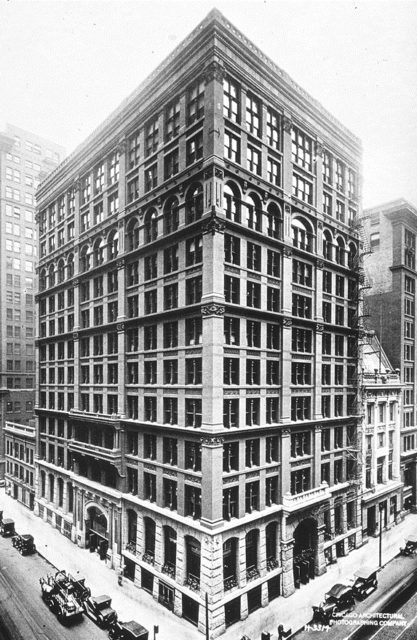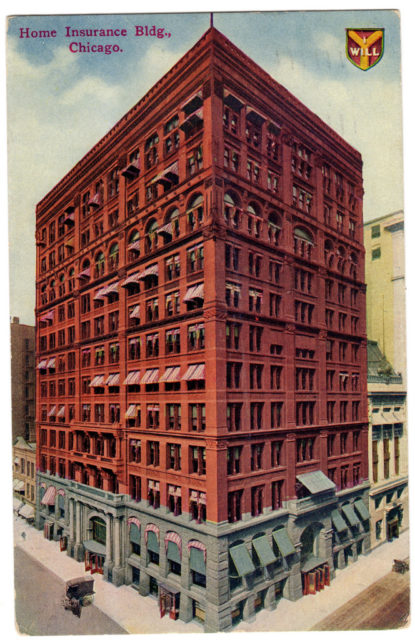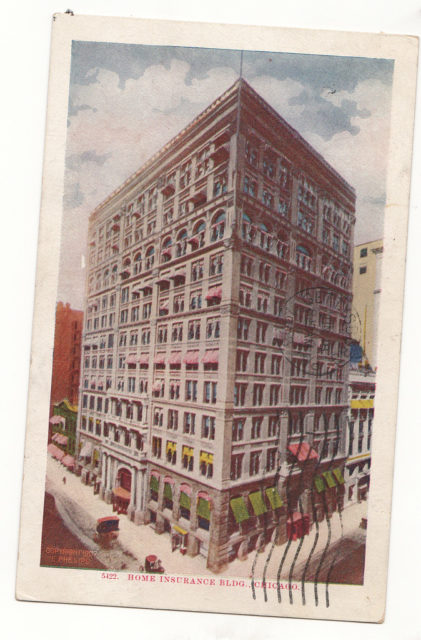Constructed in 1884 in Chicago, Illinois, Home Insurance Building is the world’s first skyscraper. It was also the first tall building to use structural steel in its frame, although the majority of its structure was composed of cast and wrought iron. While the Ditherington Flax Mill was an earlier fireproof-metal-framed building, it was only five stories tall. The Home Insurence Building had 10 stories and rose to a height of 138 ft (42 m). In 1890, two additional floors were added.

The architect was William Le Baron Jenney. The building weighed only one-third as much as a stone building would have; city officials were so concerned, they halted construction while they investigated its safety. The Home Insurance Building is an example of the Chicago School of Architecture. The building set precedent in skyscraper construction. Minneapolis architect Leroy Buffington patented the concept of the skeletal-frame tall building in 1888, and proposed “a 28-story ‘stratosphere-scraper’—a notion mocked by the architectural press of the time as impractical and ludicrous.” His proposal nonetheless attracted the attention of the national architectural and building communities to the possibilities of iron skeletal framing, “which in primitive form had been around for decades.”

A forensic analysis done during its demolition purported to show the building was the first to carry both floors and external walls entirely on its metal frame, but details and later scholarship have arguably disproved this, and it has been asserted the structure must have relied upon both metal and masonry elements to support its weight, and to hold it up against wind. Although the Home Insurance Building made full use of steel framing technology, in this theory it was not a pure steel-framed structure since it rested partly on granite piers at the base and on a rear brick wall.

The Field Building, later known as the La Salle Bank Building, then the Bank of America Building, and now the Private Bank Building, built in 1931, now stands on the site. In 1932, owners placed a plaque in the southwest section of the lobby reading:
- This section of the Field Building is erected on the site of the Home Insurance Building, which structure, designed and built in eighteen hundred and eighty four by the late William Le Baron Jenney, was the first high building to utilize as the basic principle of its design the method known as skeleton construction and, being a primal influence in the acceptance of this principle was the true father of the skyscraper, 1932.
